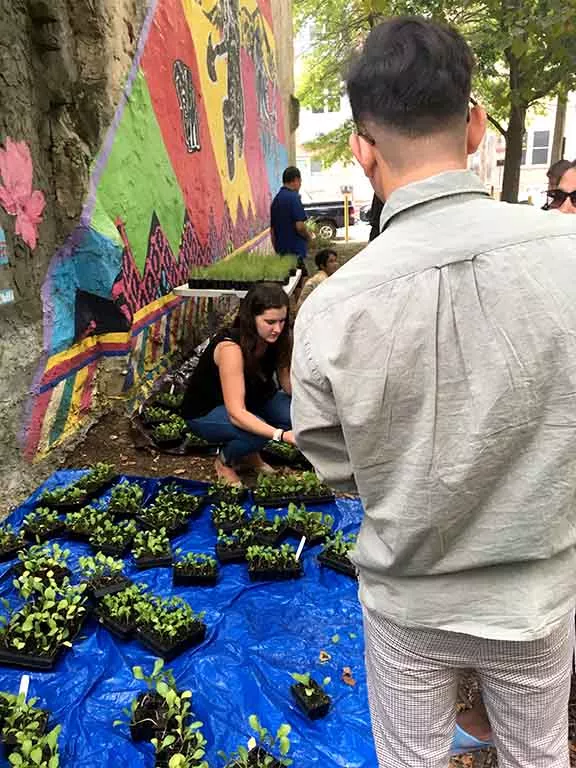Putting Down Roots
How community gardens nurture a sense of home for refugees.
Amy Stein, who graduated this spring with a Ph.D. in social work and social research from the GSSWSR, has long been interested in the healing power of nature.
For several years, Stein worked with at-risk youth in community gardens, a farm, and a wilderness therapy program in northern Maine. More recently, she provided outpatient counseling for refugees in Worcester, Mass.
For her Bryn Mawr dissertation, she undertook a qualitative study of Burmese refugees participating in a community garden program run by the Southeast Asian Mutual Assistance Associations Coalition. With the help of translators, Stein interviewed refugees who had signed up to buy raised beds in a community garden in South Philadelphia where, for $25 a year, they receive free seedlings, free water, and whatever resources they need to help grow the garden.
“What is so vitally important to them about this community garden,” says Stein, “is that they traditionally farmed as part of their daily lives in Burma, and continuing and maintaining their agrarian traditions keeps them connected to their heritage.”
The community garden also gives them the ability to be social and to prepare meals with native foods. “Eating native foods helps with a sense of familiarity and can be very affirming and calming,” says Stein, who notes that some of the participants would get rides to states as far away as North Carolina to find native seeds to plant in the garden. As well as a wide variety of greens, the gardeners grow cucumber, basil, and bitter melon, which is native to Burma.
Reproducing a Burmese vegetable garden in Philadelphia is not without its challenges. Accustomed to farming in a tropical climate and growing food year-round, the gardeners had to learn how to harvest plants and freeze them so they could continue to cook the meals they wanted during the winter. They also had to learn to grow plants in a very small, contained space, rather than the beautiful topography of hills and mountains and rivers and streams in Burma. All the participants, Stein says, talked about that adjustment.
Despite the learning curve, there were “so many findings that emerged related to psychological, social, and physical well-being,” Stein says. Especially for older people, such as the 82-year-old woman she interviewed, the garden gave a continued sense of purpose and meaning in their lives. As well as getting exercise and eating nutritionally, they had an opportunity to get out and socialize, which became increasingly important during the pandemic.
“I think it’s so important with the refugee displacement that we’re looking at right now to focus on approaches that emphasize well-being rather than just pathology,” Stein says, and to implement interventions that are “collaborative, community supported, culturally competent, and empowering.”
When you’re coming to a country where you don’t speak the language and starting completely anew, she says, developing a sense of ownership and belonging is vital to well-being.
“Deciding some place is home is a very individual decision,” Stein says, but while not all of the participants she spoke with agreed that the community garden felt like home, “they consistently emphasized that gardening in Philadelphia reminded them of gardening at home, so they were able to maintain a sense of continuity with their past and keep their cultural identity and practices alive.”
Published on: 07/19/2022
